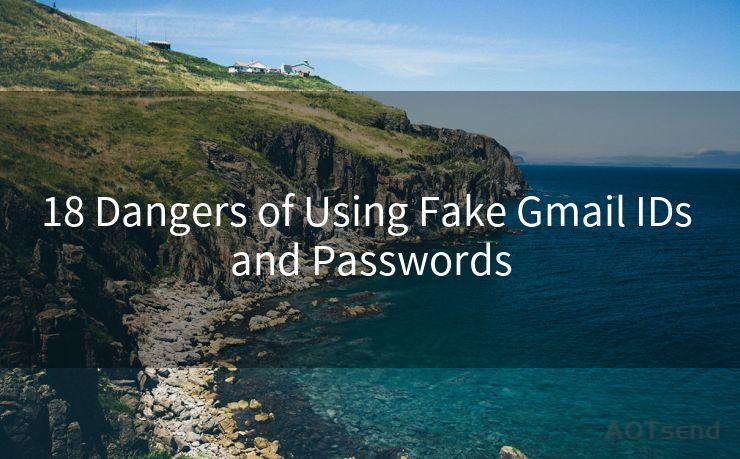14 Essential Tips for Email SPF, DKIM, and DMARC Setup




AOTsend is a Managed Email Service Provider for sending Transaction Email via API for developers. 99% Delivery, 98% Inbox rate. $0.28 per 1000 emails. Start for free. Pay as you go. Check Top 10 Advantages of Managed Email API
Email authentication protocols like SPF, DKIM, and DMARC are crucial for securing your email communications and preventing spoofing attacks. Implementing these protocols correctly can significantly enhance your email security posture. Here are 14 essential tips to help you set up SPF, DKIM, and DMARC effectively.
1. Understanding SPF (Sender Policy Framework)
SPF helps receivers verify the authenticity of an email by checking the IP address of the sending server against a list of authorized servers in the sender's DNS records. Ensure your SPF record is up to date and includes all legitimate sending sources.
2. Crafting Your SPF Record
When creating your SPF record, be precise. Include your primary mail server, any third-party email service providers you use, and don't forget to end the record with the appropriate qualifiers (-all, ~all, or ?all) based on your policy.
3. DKIM (DomainKeys Identified Mail) Basics
DKIM adds a digital signature to your outgoing emails, allowing receivers to verify that the message hasn't been tampered with during transit. Set up DKIM by generating a public-private key pair and publishing the public key in your DNS.
4. Configuring DKIM Correctly
Ensure that your DKIM signature covers the appropriate headers and that your email server is correctly signing outgoing messages with the private key. Regularly rotate your keys for added security.
5. Introducing DMARC (Domain-based Message Authentication, Reporting, and Conformance)

DMARC ties SPF and DKIM together, providing a policy for receivers to handle unauthenticated messages. It also enables senders to receive reports on the authentication status of their emails.
6. Setting Up DMARC
Start by defining your DMARC policy (none, quarantine, or reject) and setting up reporting addresses to receive aggregate and forensic reports. Gradually move from a monitoring-only policy to a more restrictive one.
7. Testing Your Configurations
Use online tools or email testing services to verify that your SPF, DKIM, and DMARC records are set up correctly. Regularly check these configurations to ensure they remain effective.
8. Handling DMARC Reports
Analyze the DMARC reports you receive to identify any authentication issues or potential spoofing attempts. Use these insights to fine-tune your email security strategy.
9. Migrating Gradually
If you're moving from one email service provider to another, update your SPF, DKIM, and DMARC records gradually to avoid disruptions in email delivery.
10. Keeping Up With Best Practices
Stay updated with the latest best practices and recommendations for email authentication protocols. This helps ensure your configurations remain secure and effective.
11. Monitoring and Alerting
Set up monitoring and alerting systems to notify you if there are any changes or issues with your SPF, DKIM, or DMARC records.
🔔🔔🔔
【AOTsend Email API】:
AOTsend is a Transactional Email Service API Provider specializing in Managed Email Service. 99% Delivery, 98% Inbox Rate. $0.28 per 1000 Emails.
AOT means Always On Time for email delivery.
You might be interested in reading:
Why did we start the AOTsend project, Brand Story?
What is a Managed Email API, Any Special?
Best 25+ Email Marketing Platforms (Authority,Keywords&Traffic Comparison)
Best 24+ Email Marketing Service (Price, Pros&Cons Comparison)
Email APIs vs SMTP: How they Works, Any Difference?
12. Educating Your Team
Ensure your team understands the importance of email authentication and knows how to handle potential issues that may arise.
13. Backing Up Your Records
Regularly back up your DNS records, including SPF, DKIM, and DMARC entries. This precautionary measure can save you time and effort in case of any unexpected issues.
14. Continuous Improvement
Regularly review your email authentication setup and make improvements based on feedback from reports and monitoring tools. Stay vigilant and proactive to maintain a robust email security posture.
By following these 14 essential tips, you can significantly enhance your email security with SPF, DKIM, and DMARC. Remember, email security is an ongoing process that requires continuous attention and improvement.




AOTsend adopts the decoupled architecture on email service design. Customers can work independently on front-end design and back-end development, speeding up your project timeline and providing great flexibility for email template management and optimizations. Check Top 10 Advantages of Managed Email API. 99% Delivery, 98% Inbox rate. $0.28 per 1000 emails. Start for free. Pay as you go.
Scan the QR code to access on your mobile device.
Copyright notice: This article is published by AotSend. Reproduction requires attribution.
Article Link:https://www.aotsend.com/blog/p1462.html











